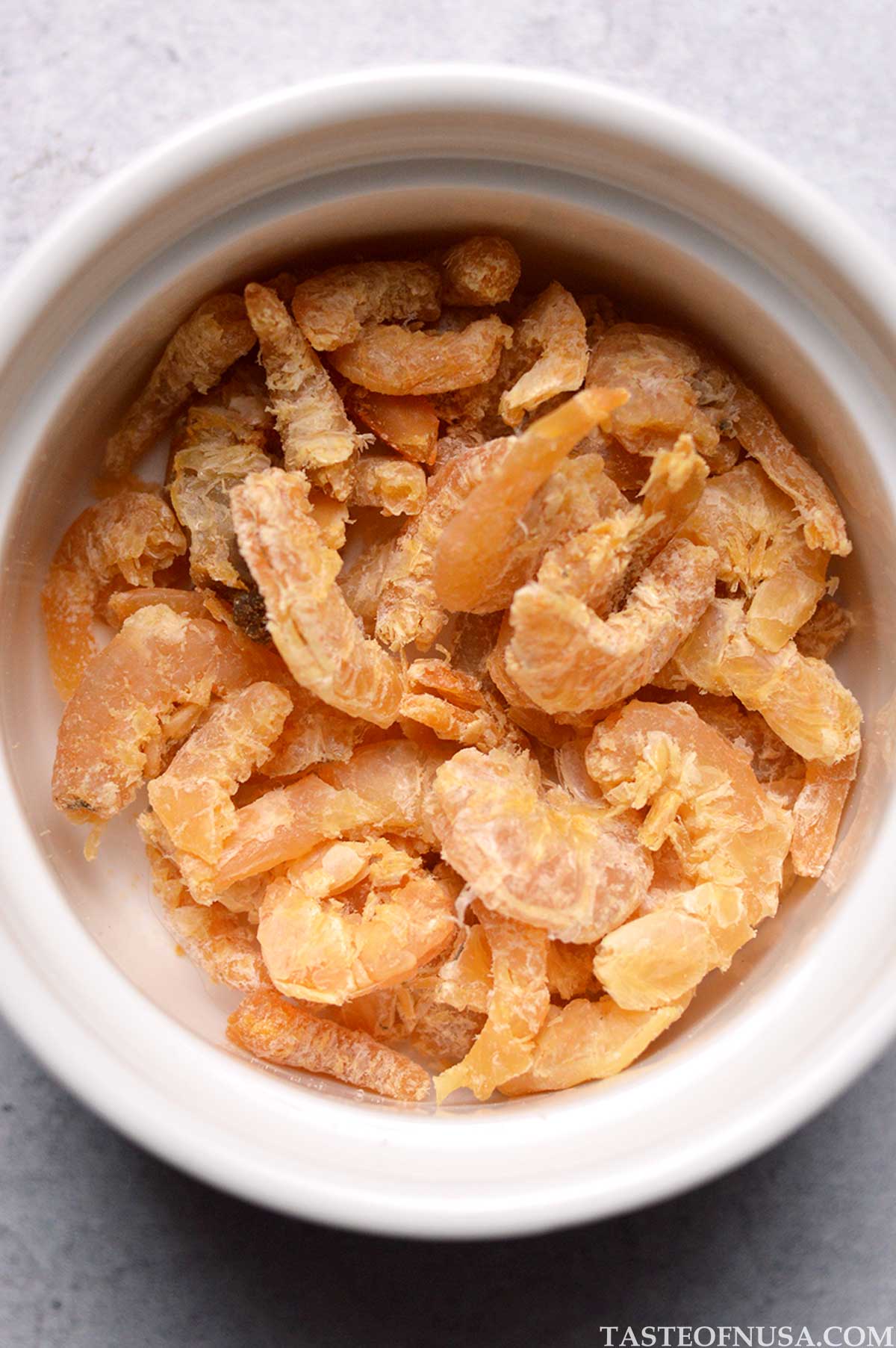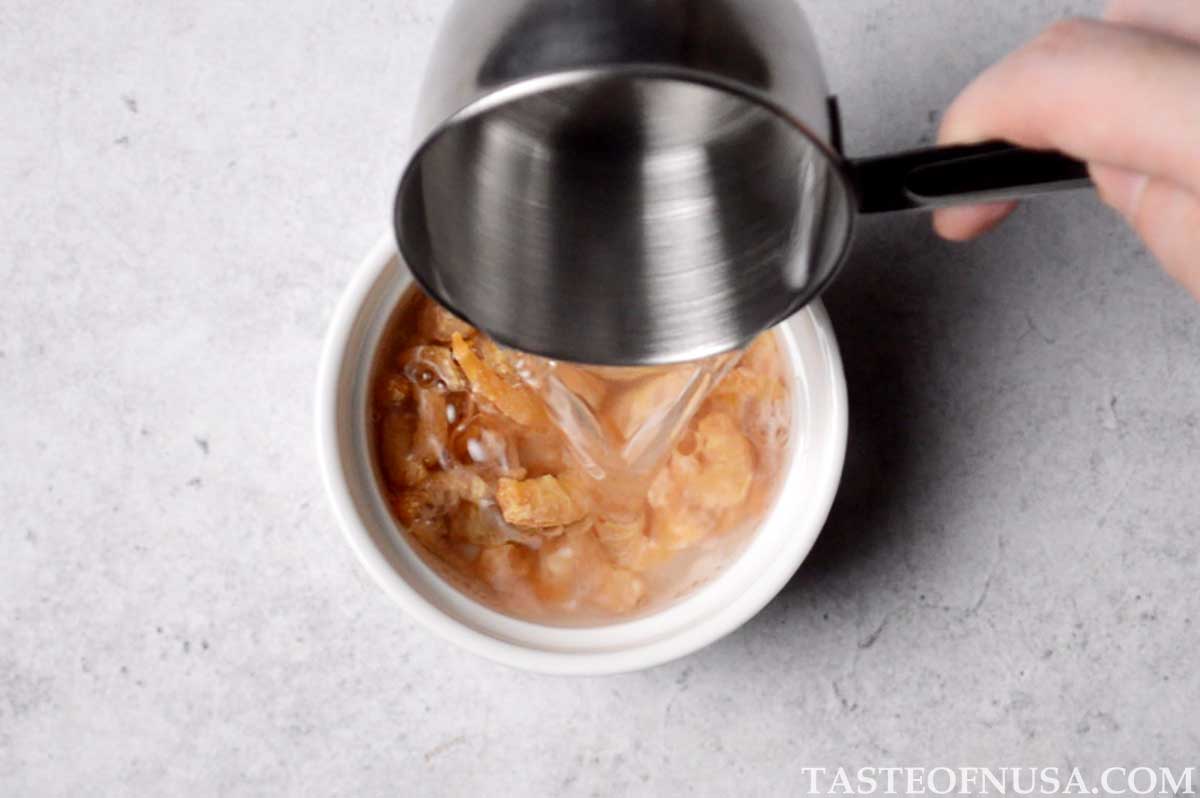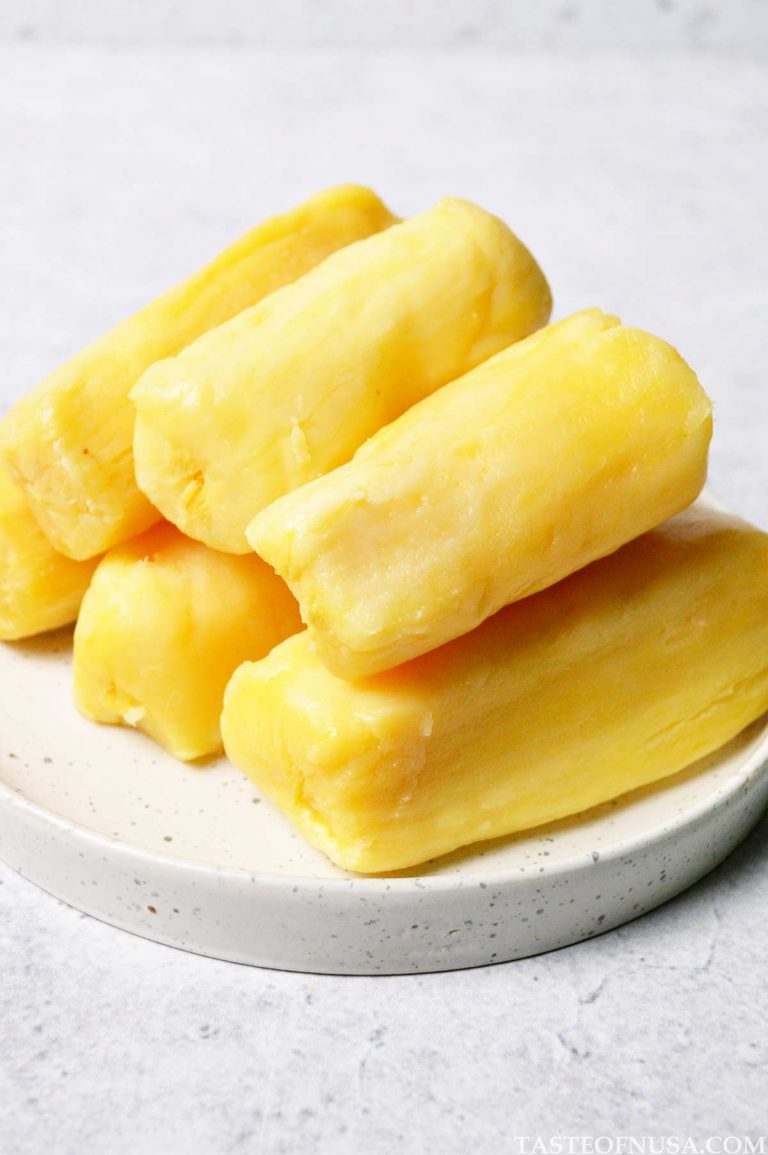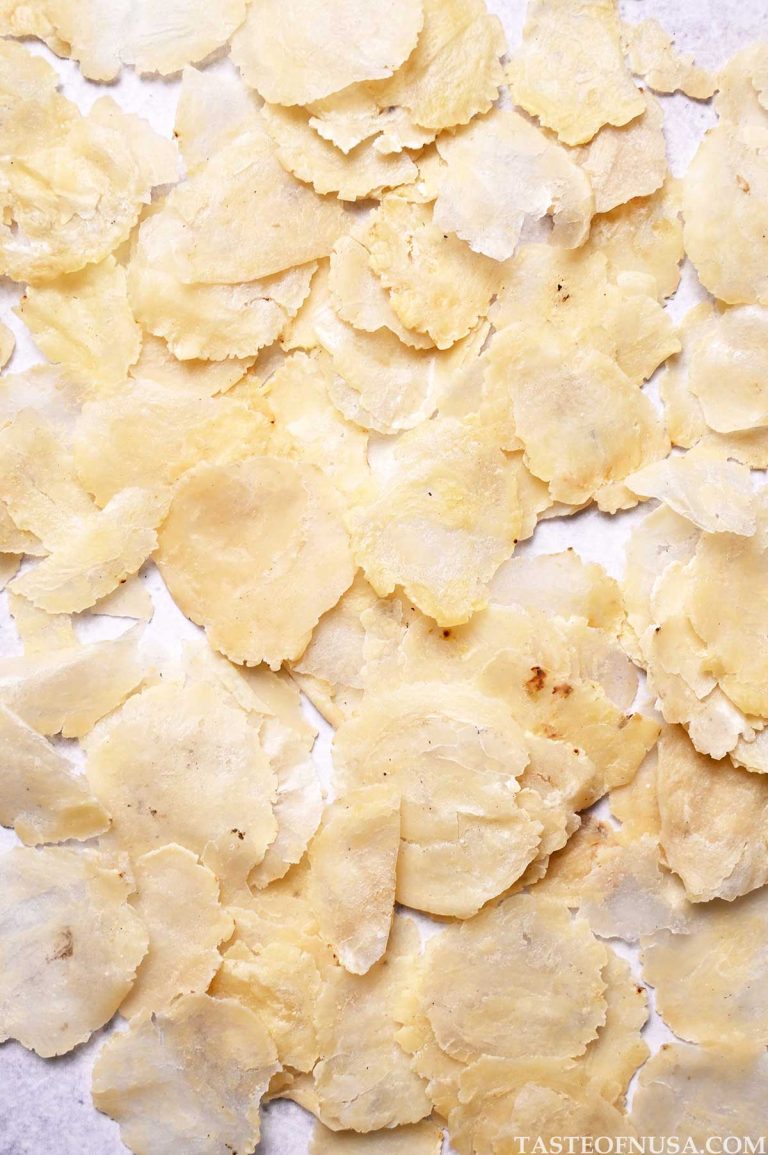Dried Shrimp
Dried shrimp is a very common ingredient in Asian cuisine, including in Indonesia. It offers a unique umami flavor and texture that fresh shrimp simply can’t match.

Other Names
- Udang kering (Malay, Indonesian)
- Ebi (Indonesian)
- 蝦米/xiā mǐ (Chinese)
- Tôm khô (Vietnamese)
- กุ้งแห้ง/kung haeng (Thai)
What are Dried Shrimp?
In the days when there were no refrigerators, people used to cure their meats and fish with salt. They are traditionally made by salting the freshly caught shrimp and then drying them in the sun, but nowadays commercial dryers are used as well.
Dried shrimp are pinkish-orange in color and chewy in texture. They are often sold in packages or in bulk with varying sizes in the market. Larger ones are usually more expensive than tiny ones. In addition, they can generally be separated into three types – shelled shrimp, shell-on shrimp, and tiny-shelled-on shrimp.
What Do Dried Shrimp Taste Like?
Dried shrimp taste different from fresh shrimp. The drying process highly concentrates the flavor and aroma of the shrimp and produces a tremendous umami punch.
Since they have been soaked in a salty solution and then dried until very hard to preserve the shrimp, some dried shrimp can taste very salty. Therefore, you need to modify or reduce the salt when adding dried shrimp to a dish.
Where to Buy
There are many brands and varieties to choose from, both in stores and online. They are often sold in plastic packages in Asian supermarkets. You might also find them sold in bulk quantities and displayed in open containers in Chinatown or other large Asian markets.
How to Choose
Before purchasing, you need to make sure whether the recipe is calling for shelled or shell-on shrimp. In most cases, shelled shrimp (without shell) are usually used unless specially mentioned. The range of colors you should look for vary from a light tan to a pretty orange-pink. They also should smell fresh and like the sea, not old and stale.
Avoid those that have become gray or brown or look washed out. If the dried shrimp look excessively dry and brittle, they might have been sitting on the shelf for too long and lost their flavor. It is best to pass on them and look for them elsewhere. If you’re using shrimp that are past their prime, it will result in an unpleasant flavor in your final dish.
How to Store
Most of the time, you will only need a small amount of dried shrimp for a dish. Therefore, you will not be able to consume everything in the packet you bought. Just because the shrimps have been dried doesn’t mean they are exempt from spoilage.
Their shelf life can vary a lot, depending on whether the shrimp were fresh when you purchased them, the sizes of the shrimp, and whether there was salt added during the production process. However, the length of time you can store dried shrimp will depend primarily on their residual water content.
The smaller, drier sort will tend to last a little longer. The larger, softer ones, in contrast, have more moisture. They have more of a tendency to go bad if kept improperly, or for too long. This will usually be apparent by an ammonia smell and, once they reach this stage, they must be discarded.
Since drying foodstuffs has long been a way to preserve them, you can, in theory at least, store your dried shrimp in any cool dark place. In practice, however, it is better to keep both the small dry shrimp, as well as the larger, moister ones in an air-tight container in the fridge. These can easily last for 4 to 5 months in the fridge or freeze them for longer storage, but check frequently and discard them if the flavor has been lost or becomes questionable in any way.
How to Prepare Dried Shrimp for Cooking
In most recipes, dried shrimp need to be rehydrated. This, however, is not always necessary, especially in recipes involving boiling, poaching, or steaming. The recipes will provide instructions on how to prepare and use them.
To rehydrate, place the dried shrimp in a bowl and pour enough water to cover them. Let them sit until softened to the desired degree. The water can either be cold, warm, or boiling, with the latter being preferable if you need to speed up the softening process as much as possible.
The actual length of time required to rehydrate the dried shrimp depends on their size and how dry they are. Soaking for ten to fifteen minutes will suffice for the smaller varieties. Meanwhile, a few hours may be needed for the larger ones.

Dried shrimp can be added whole to some dishes. Some recipes also require the rehydrated shrimp chopped, ground, or minced to a particular consistency before adding them to the dish.





